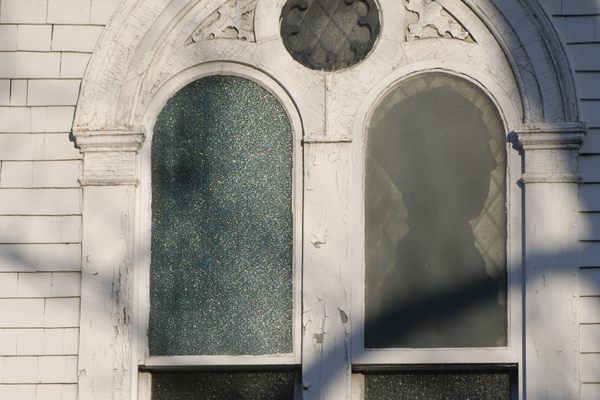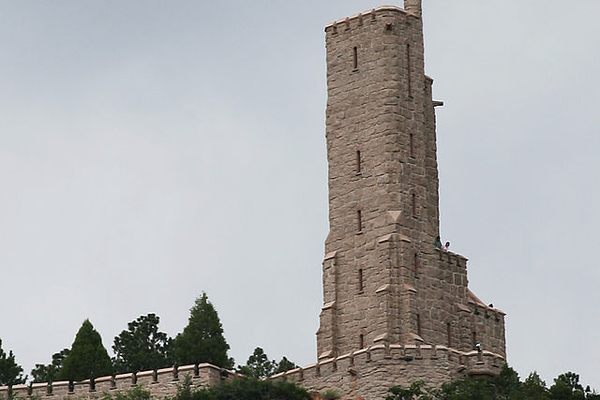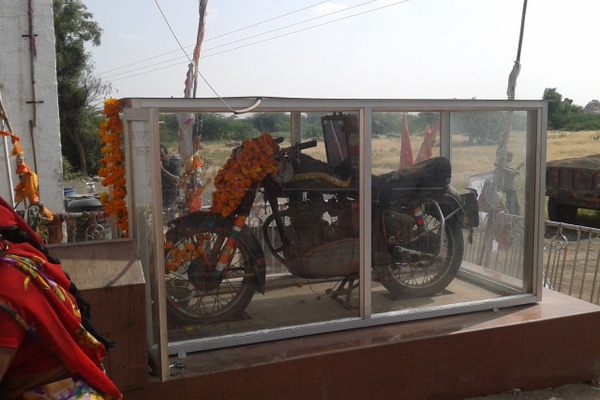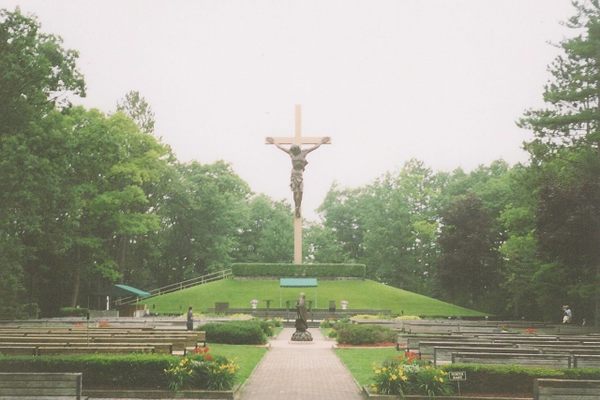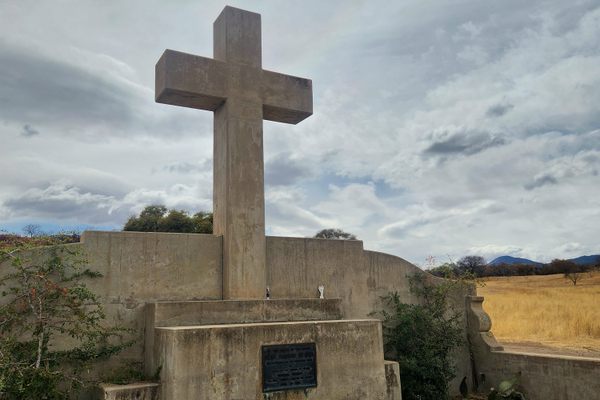About
Atsuta Jingū in Nagoya is one of the most revered shrines in Japan, believed to have been founded during the reign of Emperor Keikō (71-130) to house the sacred sword Kusanagi-no-tsurugi, one of the Three Imperial Regalia of Japanese mythology.
Nestled in a corner of this shrine complex, half-hidden in the wooded gardens, stands a strange monument imitating the Shakōki-dogū, an ancient clay figurine from the Jōmon period, circa 1000-400 B.C. Often described as being astronaut- or even alien-like, the original idol was found in 1887 in Aomori, a prefecture in northern Japan. It’s an unexpected, surreal sight, and what makes it even more mind-boggling is that the inscription on its pedestal reads meganenohi: “monument to glasses.”
The monument was erected in 1982 by the Nagoya Association of Optical Industry to commemorate the 60th anniversary of its foundation, and the dogū motif was chosen due to its appearance: Shakōki refers to the Inuit snow goggles, which the facial design of the idol is said to resemble.
Related Tags
Hidden Japan: Sado Island, Nara & Kyoto
Explore a different side of Japan.
Book NowCommunity Contributors
Added By
Published
September 6, 2024














